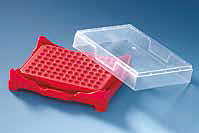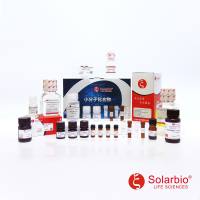分类物质
互联网
1318
| Word | Definition | Topic |
|---|---|---|
| allotropes | Allotropes are structurally-different forms of an element. They differ in the way the atoms bond with each other and arrange themselves into a structure. Because of their different structures, allotropes have different physical and chemical properties | Classifying materials |
| atom | All elements are made of atoms. An atom consists of a nucleus containing protons and neutrons, surrounded by electrons. | Classifying materials |
| compound | A compound is a substance formed by the chemical union (involving bond formation) of two or more elements. | Classifying materials |
| conduct | To allow electricity, heat or other energy forms to pass through. | Classifying materials |
| covalent bond | A covalent bond between atoms forms when atoms share electrons to achieve a full outer shell of electrons. | Classifying materials |
| double bond | A double bond is a covalent bond resulting from the sharing of four electrons (two pairs) between two atoms. | Classifying materials |
| ductile | If a material is ductile it is capable of being drawn into thin sheets or wires without breaking. | Classifying materials |
| electron | An electron is a very small negatively-charged particle found in an atom in the space surrounding the nucleus. | Classifying materials |
| electrostatic | An electrostatic force is generated by differences in electric charge (ie positive and negative) between two particles. It can also refer to electricity at rest. | Classifying materials |
| formula | A formula is a combination of symbols that indicates the chemical composition of a substance. | Classifying materials |
| groups | The groups of elements in the periodic table are the elements which have the same number of electrons in their outer shells and so have similar chemical properties. A group of elements all lie in same column in the periodic table. | Classifying materials |
| ion | An ion is a charged particle formed by loss or gain of electrons. When atoms lose an electron they become a positive ion. When they gain an electron they become a negative ion. | Classifying materials |
| ions | Charged particles formed by loss or gain of electrons. When atoms lose an electron they become a positive ion. When they gain an electron they become a negative ion. | Classifying materials |
| ionic bond | An ionic bond forms between two atoms when an electron is transferred from one atom to the other, forming a positive-negative ion pair. | Classifying materials |
| ionic compound | An ionic compound occurs when a negative ion (an atom that has gained an electron) joins with a positive ion (an atom that has lost an electron): The ions swap electrons to achieve a full outer shell. | Classifying materials |
| isotopes | Atoms of the same element that have different numbers of neutrons are called isotopes. | Classifying materials |
| lattice | A lattice is a regular grid-like arrangement of atoms in a material. | Classifying materials |
| lubricant | A substance used to reduce the friction between two solid surfaces. | Classifying materials |
| malleable | If a material is malleable it is capable of being hammered or pressed out of shape without being likely to break or return to the original shape. | Classifying materials |
| mass | Mass is a measure of the amount of material in an object. It is measured in grams (g). | Classifying materials |
| mass number | The mass number (A) of an element is the number of protons plus the number of neutrons in the nucleus of the atom. | Classifying materials |
| molecular compound | A molecular compound is made up of at least two different elements, which share electrons to form covalent bonds. | Classifying materials |
| molecule | A molecule is a collection of two or more atoms held together by chemical bonds. It is the smallest part of a substance that displays the properties of the substance. | Classifying materials |
| molten | Molten means reduced to liquid form by heating. It is mainly used to describe rock, glass or metal. | Classifying materials |
| negligible | So small as to be not worth considering. | Classifying materials |
| nucleus | Found at the centre of an atom, the nucleus contains protons and neutrons. | Classifying materials |
| neutron | A neutron is a particle that is found in the nucleus of an atom, has a mass approximately equal to that of a proton, and has no electric charge. | Classifying materials |
| product | A product is a substance formed in a chemical reaction. | Classifying materials |
| protons | A proton is a small particle with a positive charge found in the nucleus of the atom. | Classifying materials |
| radioactive | A radioactive isotope gives off (or is capable of giving off) radiant energy in the form of particles or rays by the spontaneous disintegration of the nucleus. | Classifying materials |
| reactant | A reactant is a substance put together with another substance/substances to undergo a chemical reaction. | Classifying materials |
| relative mass | The relative mass is the number of times heavier a particle is, compared to another. | Classifying materials |
| stable | Atoms are stable if their outer shell contains its maximum number of electrons. | Classifying materials |










